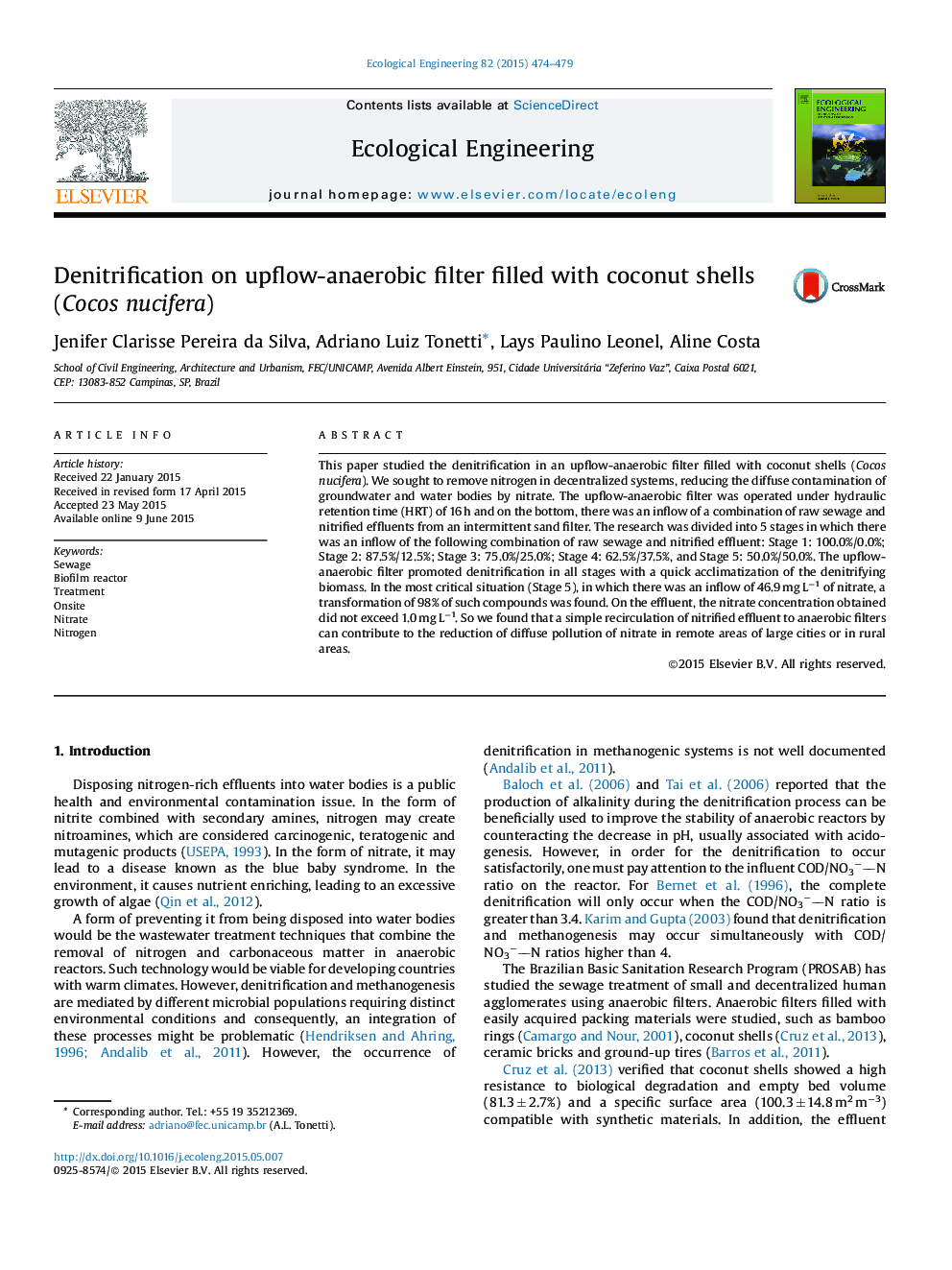| Article ID | Journal | Published Year | Pages | File Type |
|---|---|---|---|---|
| 4388997 | Ecological Engineering | 2015 | 6 Pages |
This paper studied the denitrification in an upflow-anaerobic filter filled with coconut shells (Cocos nucifera). We sought to remove nitrogen in decentralized systems, reducing the diffuse contamination of groundwater and water bodies by nitrate. The upflow-anaerobic filter was operated under hydraulic retention time (HRT) of 16 h and on the bottom, there was an inflow of a combination of raw sewage and nitrified effluents from an intermittent sand filter. The research was divided into 5 stages in which there was an inflow of the following combination of raw sewage and nitrified effluent: Stage 1: 100.0%/0.0%; Stage 2: 87.5%/12.5%; Stage 3: 75.0%/25.0%; Stage 4: 62.5%/37.5%, and Stage 5: 50.0%/50.0%. The upflow-anaerobic filter promoted denitrification in all stages with a quick acclimatization of the denitrifying biomass. In the most critical situation (Stage 5), in which there was an inflow of 46.9 mg L−1 of nitrate, a transformation of 98% of such compounds was found. On the effluent, the nitrate concentration obtained did not exceed 1.0 mg L−1. So we found that a simple recirculation of nitrified effluent to anaerobic filters can contribute to the reduction of diffuse pollution of nitrate in remote areas of large cities or in rural areas.
